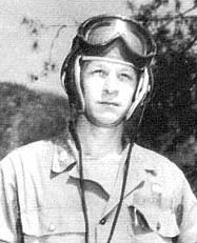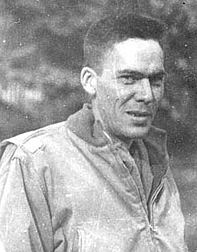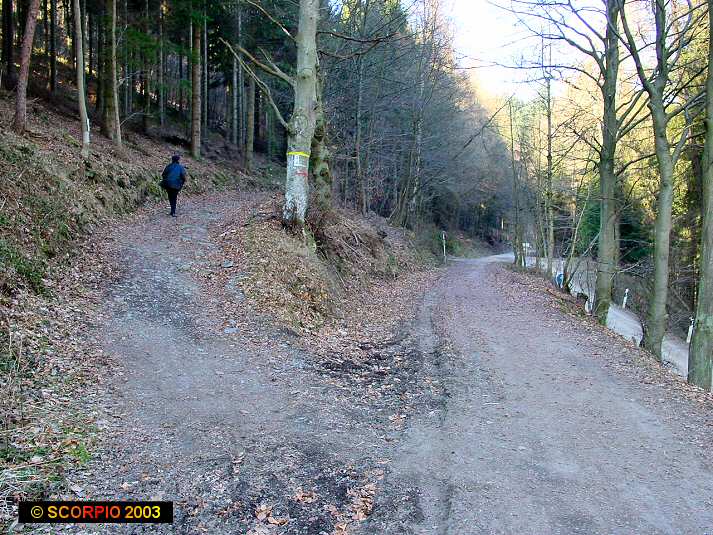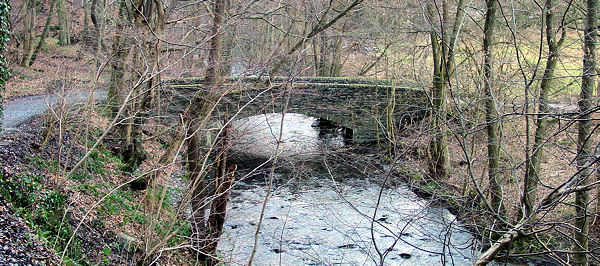CHAPTER III
Action at Kommerscheidt and Schmidt
Concurrently with the action at VOSSENACK, troops of the 112th Regiment became involved in fighting at KOMMERSCHEIDT, and SCHMIDT. These two towns are accessible from VOSSENACK only by a tortuous, twisted trail which passes through the forest and dips into the valley of the KALL RIVER (Figure 4).

Figure 4. MSR between VOSSENACK and KOMMERSCHEIDT showing knocked out tanks.
This trail was a distinct obstacle for tanks, tank destroyers, and supply and medical vehicles. It was narrow, unpaved, barely the width of a tank, and was characterized by sharp angled turns and rock abutments which hindered the passage of vehicles. These conditions were aggravated by the frequent rainfall occurring in early November.
SCHMIDT, it will be remembered, was the objective of the 112th Regiment and of the 28th Division in the attack which began on 2 November. Its importance was its control of a good road net and the fact that it dominated the SCHWAMMENAUEL DAM on the ROER RIVER. Since VOSSENACK had been taken with comparative ease on the first day, it was decided to pass the 1st and 3rd battalions through the 2nd in VOSSENACK to attack KOMMERSCHEIDT and SCHMIDT respectively. This was a slight change in the original plan which contemplated the attack through RICHELSKAUL. However, after an abortive attempt in this direction on 2 November, the plan was changed as indicated. The new plan was successful and by nightfall the 3rd battalion was in SCHMIDT, having taken it virtually unopposed, while the 1st battalion was in and around KOMMERSCHEIDT also occupied with very little trouble. However, the attackers who had, been so successful soon became the defenders of their respective towns without American armor forward to support them. Company A, 707th Tank Battalion, was the unit which was committed to the support of these troops and was reinforced by Company C, 893d Tank Destroyer Battalion (equipped with M 10's). The difficulties which beset the tanks and TDs are brought out in the following account.
2 November found Company A, 707th Tank Battalion, located in GERMETER in a reserve role. Its mission was:
- to support by fire the attack of Company C with the infantry on VOSSENACK,
- to guard against a possible counterattack from HÜRTGEN and the north east, and
- to be prepared to support the 1st and 3rd battalions, 112th Regiment, in their attack on SCHMIDT.
After an inactive day, Capt. Bruce M. Hostrup, the company commander, was called to the regimental CP at 1800. He was told that his company was to support the attack of the 3rd battalion which had the mission of securing KOMMERSCHEIDT and of driving on to seize, consolidate, and establish road blocks in SCHMIDT. Next he met Lt. Col, Flood, C.0. of the 3rd battalion, to discuss plans for the attack.
 Colonel Richard W. Ripple |
 LTC Raymond E. Fleig Fleig in Chorwon, Korea in 1952 |
 Capt. Bruce M. Hostrup |
The tanks.were to be employed as follows: 2nd and 3rd tank platoons support L and K companies respectively as they attacked KOMMERSCHEIDT abreast, starting from the church at VOSSENACK; the 1st tank platoon follow at about four hundred yards. The tanks with the leading companies were initially to lead the infantry and assist in cleaning out any Germans who might occupy the nose of the ridge. Next, they planned to fire into the woods while the infantry moved forward, and finally, pull back to high ground from which they could fire directly into KOMMERSCHEIDT until the infantry reached the hill immediately north of that town. Although the assaulting infantry companies intended to lay wire as they advanced, the 'cease fire' to the tanks was to depend on visual means only.
The attack jumped off at 0700 3 November and went almost as planned. Platoon leader, Lt. John J. Clark lost his tank to a German mine. The rest of the tanks pulled back to the high ground, commended firing into KOMMERSCHEIDT as outlined, and lifted their fire when they were able to see the infantry moving in good formation up the high ground on the other side of the KALL RIVER. The tanks then took advantage of what defilade was available and waited for word from the engineers that the trail between VOSSENACK and KOMMERSCHEIDT was passable.
About 1700 word came from Lt. Col. Ripple that the engineers had reported the road clear. Capt. Hostrup in one of his tanks reconnoitered the road and found that it was still impassable for tanks. After reporting this to Col. Ripple, who relayed it to division headquarters, the captain was subsequently ordered to remain in place until morning. He was told that engineers would work on the road to KOMMERSCHEIDT all night. The tanks remained in this position the rest of the night during which time artillery and mortar fire hit several but caused no material damage. Three tanks were inoperative by this time, however, from other causes. Lt. Clark's had hit a mine, a second had thrown a track, and a third had bellied up on a sharp rocky ridge. The fire received during the night prevented retrievers from coming to their aid.
At daylight Company A again tried the trail to KOMMERSCHEIDT. Lt. Raymond E. Fleig leading the first platoon started to move through the draw, but as he reached the entrance his tank hit a mine and threw a track. This was 24 hours after the engineers had reported the road clear of mines. Lt. Fleig reported to Capt. Hostrup who told him to get his tank clear of the road the company had to go through. Lt. Fleig then began a battle with the terrain which resulted in a number of disabled tanks and denied tank support to the infantry in KOMMERSCHEIDT and SCHMIDT. In attempting to move his second tank around the first it slipped off the left side of the road and became mired in the soft ground. At this point his platoon sergeant hooked a twenty-foot-long steel cable to the towing shackle of the operable tank and winched the remaining three tanks of the platoon past the command tank and removed the stuck tank.
As soon as the lead tank was clear Lt. Fleig took it toward the river, being forced at intervals to back and turn the tank in order to negotiate the turns in the trail (Figure 4.) At the three switchbacks he was forced to direct the tank on foot.

One of the switchbacks on the Kall Trail
After crossing the stone bridge at the KALL he led his tank on foot nearly to the top of the hill north of KOMMERSCHEIDT. He made a brief visual reconnaissance of his route, mounted his tank, and rode into town, arriving about 0730. There he reported to the CO of the 1st battalion, 112th Regiment, stating that he expected the rest of his company up by noon. The colonel told him that a German counterattack had driven part of the 3rd battalion out of SCHMIDT and asked him to take a position from which he could support a further withdrawal. Lt. Fleig was joined about 0930 by his platoon sergeant with two tanks. All three tanks were placed in partial defilade covering SCHMIDT.

Rebuild arched Kall bridge.
On the night of 11-8 - 11-9 1944, the Germans destroyed the bridge.
The Germans apparently no longer considered the defense at SCHMIDT effective and at 1100 counterattacked KOMMERSCHEIDT with infantry and tanks. Lt. Fleig destroyed two Mark IVs and the other two tanks accounted for a third. Fleig then moved to his left where the defenders were giving way and engaged and knocked out a Mark V, after which he returned to the other American tanks and continued to fight with them until the attack was finally repelled at 1300. The tanks spent the remainder of the afternoon firing at pillboxes west of SCHMIDT which the enemy was trying to reoccupy. Lt. Fleig had been instructed not to fire into SCHMIDT as part of M Company, 112th Regiment, was still there. About 1500 these troops pulled out and Lt. Fleig was ordered by the regimental CO to remain where he was. The colonel promised him infantry ground support adding that he expected another counterattack and stated that he felt if the tanks moved out of position, even for re-supply, the infantry on the position would leave also. The expected night attack did not materialize, but artillery and mortar fire rained on the area.
During the time that Lt. Fleig was engaged in KOMMERSCHEIDT Capt. Hostrup was desperately trying to reach the town with the remainder of Company A. He had walked down the trail to assist the last of Lt. Fleig's platoon in crossing the KALL. The last tank of the platoon threw a track and became mired at the bottom of the draw. About this time Lt. Clark in his platoon sergeant's tank led his platoon forward. Not knowing the method which had been used to winch the 1st platoon around the dead tank at the trail entrance, Lt. Clark lost his tank off the road to the left when it tried to pass. Lt. Clark and the sergeant dismounted to survey the situation when artillery fire killed the sergeant and wounded Lt. Clark. The next two tanks using the two immobilized tanks, as buffers went straight through on the road. Upon reaching the first bad curve the tank in the lead slipped off the road to the left and threw a track. The next tank, about 150 yards behind, also slipped off the left of the road throwing both tracks. Thus there were three tanks blocking the MSR to KOMMERSCHEIDT with little chance of getting maintenance vehicles near them.
Capt. Hostrup, later joined by personnel from his company maintenance section, worked on the vehicles and on the MSR. The center tank of the three was of most concern to the workers; its tracks were replaced time after time only to have it roll a few yards and lose its tracks again. The tankers in the draw also assisted the engineers in trying to dig bypasses out of the high right bank of the road to reopen it for traffic.
These banks were largely stone, however, and even blasting failed to produce satisfactory results. During the day and night the work of the tankers and the engineers was continually interrupted by interdictory mortar and artillery fire, and once the workers were delayed by the stream of infantry pouring back from SCHMIDT. Capt. Hostrup kept Col. Ripple abreast of the situation and received the promise of additional engineers. By midnight the tank battalion S-4 was on the road waiting to take a supply train through to KOMMERSCHEIDT. Finally, acting on orders from tank battalion headquarters and with daylight approaching, Capt. Hostrup and his men rolled the blocking tanks into the draw, permitting the supply trains to go through.
At O43O Capt. Hostrup walked back up the road to his 3rd platoon position and stayed there until 0600 at which time he returned to the MSR. He learned that the engineers had been able to get bulldozers in and that the road was passable. Returning to the 3rd platoon, he attached to the platoon the remaining two tanks of the 2nd platoon and followed this group toward the road entrance. Lt. Payne, commanding the third platoon, halted to allow nine destroyers from the 893rd Tank Destroyer Battalion to move through ahead of him. Little difficulty was experienced with the road, and Lt. Payne had his platoon on the hill north of KOMMERSCHEIDT by 0900. Capt. Hostrup's tank developed engine trouble south of the KALL and he radioed Lt. Fleig to take command of all tanks in the area pending his arrival.
Lt. Fleig with his three tanks helped the infantry beat off a small tank-infantry counterattack, which faltered after a German Mark VI had received seven direct hits from the American tanks. About 0900 the Germans counterattacked again, this time without tanks. The tank destroyers arrived in town during the second attack which was also beaten off. Lt. Payne's platoon then joined the defenders and the enemy counterattacked regularly at about four-hour intervals during the day; none of the attacks were successful. At dark the tank destroyers went to the rear to re-supply, but the tanks again were ordered to remain in the town. Capt, Hostrup's tank, again operative, was at the regimental CP where the regimental CO wanted it for communication purposes. The division commander's orders to the regiment that night were to hold KOMMERSCHEIDT at all costs.
At about 0330 a German counterattack cut the lightly defended MSR and the enemy roamed it practically at will. Part of the tank battalion S-4 section was cut off in KOMMERSCHEIDT. The infantry regimental CP moved south into the town and joined the 1st battalion CP. At 0900 the Company A tanks protecting the south and southeast flanks of the town spotted another counterattack which was effectively broken up by artillery, tanks, and TDs. The tanks remained on a forward slope all day with the dug-in infantry but were forced to move continually in the face of direct fire and artillery from the excellent German positions near SCHMIDT, HARSCHEIDT, (FO703O6) and BERGSTEIN, consuming more of their now precious gasoline. When night fell the tanks pulled in near the buildings of the town. Two of Lt. Fleig's tanks were sent to the rear, having received direct hits which jammed their turrets.
Meanwhile, an unusual event was taking place. The tank battalion commander was appointed commander of a task force to be known as Task Force Ripple consisting of:
- The 3rd battalion, 110th Infantry Regiment (already weakened by fighting in the south of the division Sector).
- Company A, 707th Tank Battalion (already in KOMMERSCHEIDT),
- Company D (light tanks) of the 707th, and
- Company C, 893rd Tank Destroyer Battalion (also in KOMMERSCHEIDT but weakened by 3 or 4 destroyers), plus one platoon of Company B, 893rd.
Company D 707th was on a screening mission to the south and actually never joined the task force, nor did the extra platoon of tank destroyers
At 0245 on the morning of November the battered infantry battalion of Task Force Ripple crossed its line of departure GERMETER ROAD-HÜRTGEN). Its mission was to pass through the embattled defenders of KOMMERSCHEIDT, pick up the remainder of the task force, and recapture SCHMIDT.
At daylight the weather, already cold, was made more disagreeable by rain. The 3rd battalion 110th Regiment, under Lt. Col. Ripple, TF commander, arrived at the woodline north of KOMMERSCHEIDT in time to witness a German counterattack on the town following a 30 minute artillery preparation. The size of the enemy force was estimated as from one to two battalions supported by tanks. Estimates of the number of hostile tanks vary from 6 to 30 (probably 12-15), but the observers in many cases were bordering on hysteria. The American infantry dug in about the town had fire poured into their foxholes from dominating positions for several days. The enemy tanks were engaged by American tanks, TDs and infantry bazookas. Three TDs and two of the defending tanks were knocked out. One sergeant tank commander, whose tank was shot out from under him, took over the crew of a TD which had lost its commander and fought until that too was knocked out. The defending armor began a withdrawal to the north, losing two more tanks with thrown tracks. The infantry, battered and depleted by being under constant fire for five days, was also leaving. Finally one tank and two TDs remained and supported Company C of the 112th Regiment, holding the woodsline north of KOMMERSCHEIDT, where the infantry battalion of TF Ripple was also located. The one remaining tank was Lt. Fleig's. After dark Lt. Payne took a patrol forward and carried back ammunition from his own immobilized tank to be used by Lt. Fleig. The defenders of the woodsline were required to beat off another counterattack during the night.
This ragged force held the woodsline during the following morning even though many of the troops had gone to the rear during the night. There was little activity on this day but the recapture of SCHMIDT was out of the question. About 1700 the force was ordered to withdraw north of the KALL and to destroy the remaining tanks and TDs. This terminated the action of Company A of the 707th as a fighting force in the HURTGEN FOREST. The remaining men of the company were led back to GERMETER by Capt. Hostrup, Lt. Fleig and other officers. Company A had lost 15 of its 16 tanks and 32 men were missing.
The key to the failure of the forces at KOMMERSCHEIDT and SCHMIDT was the failure of adequate and timely armored support. Because of the terrain and road net the armored support depended in turn on engineer support. We have seen that the bulk of the engineer group attached to the 28th Infantry Division was engaged in fighting in VOSSENACK. Even those who were assigned to make the MSR passable for tanks were required to provide their own security which reduced the number of men available to work on the road. The lesson learned here is that if armor is to support the infantry operation it must be made certain prior to the operation the armor can move to the vital area when needed.
The loss of SCHMIDT was a bitter blow to the Allied cause, and it was not recaptured until early 1945.

